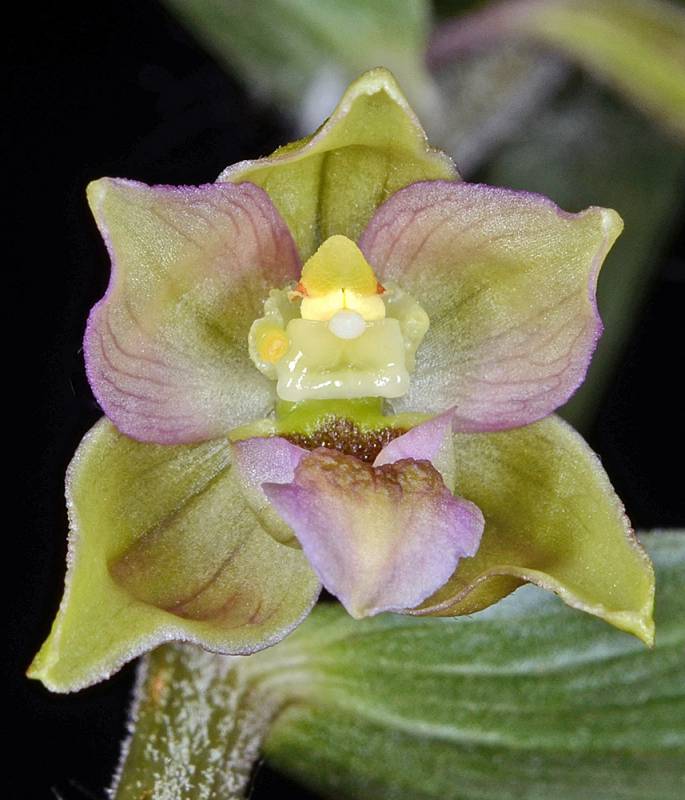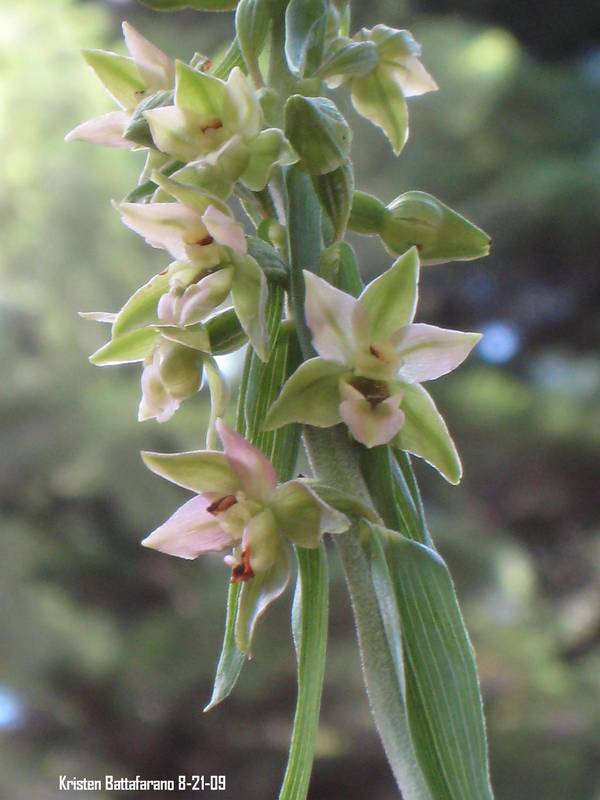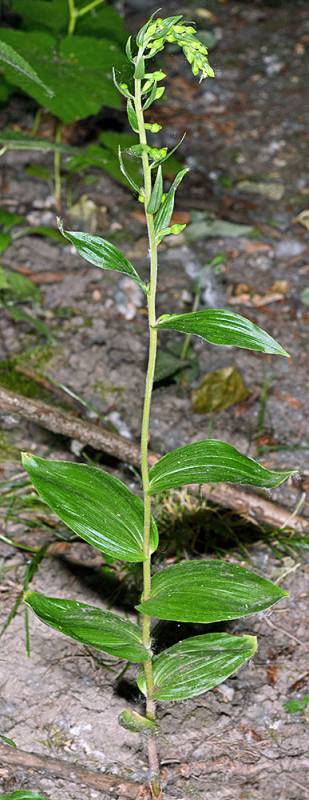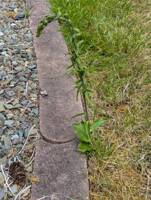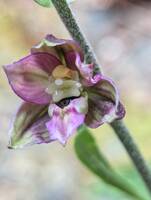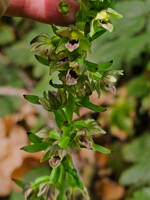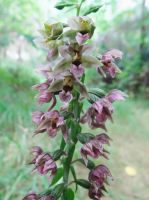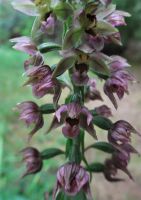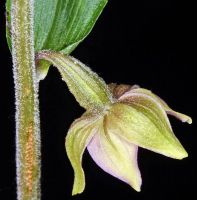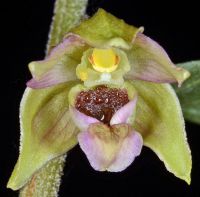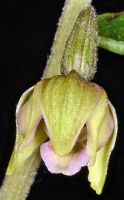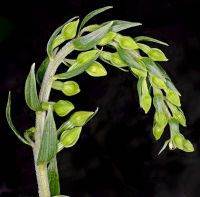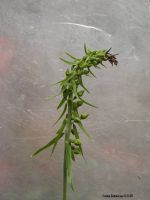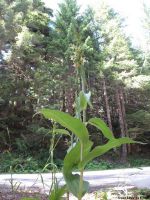Distribution: Occurring west of the Cascades crest in lowland areas in Washington; British Columbia to California, in scattered locations across North America to the Atlantic Coast, where more common.
Habitat: Moist to dry forest edge and understory, often where disturbed.
Flowers: June-October
Origin: Introduced from Eurasia
Growth Duration: Perennial
Conservation Status: Not of concern
Pubescent, perennial herbs from short rhizomes, the stems erect, 25-80 cm. tall.
Leaves alternate, 3-10, sessile and sheathing, orbiculate, elliptic or lanceolate, 4-18 cm. long and 1.5-8.5 cm. wide.
Inflorescence a one-sided, bracteate, many-flowered raceme; floras bracts spreading, linear, 10-40 mm. long, often exceeding flowers; sepals 3, greenish, 10-13 mm. long; upper 2 petals ovate, 9-11 mm. long, pale green, pink, purple or yellowish; third petal (lip) in 2 parts, the inner part purplish to brownish, concave, 9-12 mm. long and 8 mm. wide; outer part recurved, pink, triangular-ovate, flat, 5 mm. long and wide; stamens and style fused to form a column 3-6 mm. long.
Capsule obovoid, 9-14 mm. long.
Publication: Stirp. Austr. Fasc. ed. 2. 2: 467. 1769.
Serapias helleborine L.
PNW Herbaria: Specimen records of Epipactis helleborine in the Consortium of Pacific Northwest Herbaria database
WA Flora Checklist: Epipactis helleborine checklist entry
OregonFlora: Epipactis helleborine information
E-Flora BC: Epipactis helleborine atlas page
CalPhotos: Epipactis helleborine photos

